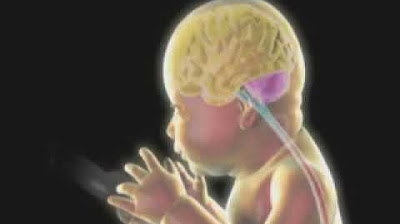Brain Circuits: Harvard Medical School Researchers Crawl a Neural Network
Summary
TLDRThis lab research delves into the cerebral cortex, the brain's outer layer responsible for perception, memory, and planning. The study is divided into two parts: observing neuron activity in response to visual stimuli and tracing the physical connections between these neurons using electron microscopy. The team created a 3D wiring diagram by stitching together millions of high-resolution images, allowing them to map a partial circuit and gain insights into how the brain processes visual information. This novel approach offers a powerful tool for exploring the brain's complexity and the enigma of the mind.
Takeaways
- 🧠 The lab focuses on studying the cerebral cortex, the outer part of the brain responsible for perception, memory, and planning.
- 🔬 The research aims to understand the brain circuit by circuit, with each circuit comprising approximately 10,000 neurons and tens of millions of connections.
- 🐁 The first part of the study involves observing the brain's response to visual stimuli by recording the activity of 50 neurons in an animal's brain.
- 💡 Neurons react to specific elements in the visual scene, and each neuron's activation is represented by a flash of light.
- 🔍 A significant challenge in this research is tracing the physical connections between the observed neurons.
- 📸 The second part of the study uses an electron microscope to take millions of high-resolution images of the neurons over several months.
- 🧩 The process of creating a wiring diagram involves assembling a three-dimensional representation of the neural circuit from billions of pixels.
- 👨🔬 Three scientists manually traced the connections for 10 selected neurons from the 3D images, creating a partial wiring diagram of the circuit.
- 🎯 The study identified the target neurons for each of the 10 neurons, contributing to the understanding of how the brain processes visual information.
- 🌟 This research offers a new and powerful approach to explore the complexity of brain circuits and contributes to the understanding of how the mind works.
Q & A
What is the primary focus of the lab's research?
-The lab's research primarily focuses on studying the cerebral cortex, which is the outer layer of the brain responsible for perception, memory, and planning.
What is a 'circuit' in the context of the cerebral cortex?
-A 'circuit' in the context of the cerebral cortex refers to a network of roughly 10,000 neurons with tens of millions of connections between them.
What are the two main aspects researchers aim to understand about these circuits?
-Researchers aim to understand what the circuit does and how it does it, which involves studying both the function and the connectivity of the neurons within the circuit.
How does the lab observe the brain's response to visual stimuli?
-The lab observes the brain's response to visual stimuli by showing a movie to an animal and recording the activity of 50 neurons in the animal's brain, which light up as they fire in response to specific elements in the visual scene.
What is the challenge in studying these neural circuits?
-The challenge lies in tracing the physical connections between the neurons, which requires high-resolution imaging and complex analysis to map out the wiring diagram of the circuit.
What role does the electron microscope play in the study?
-The electron microscope is used to take millions of high-resolution pictures of the neurons over several months, which are then assembled into a wiring diagram.
How does the lab create a three-dimensional representation of the neural circuit?
-The lab creates a three-dimensional representation by stitching together millions of pictures, comprising billions of pixels, to visualize the dense network of connections between neurons.
What was the process for tracing the connections of the selected neurons?
-Three scientists from the lab selected 10 individual neurons that were observed firing in the first part of the study and painstakingly traced their connections using the 3D images, creating a partial wiring diagram of the circuit.
What does this research offer in terms of understanding the brain's visual processing?
-This research provides a new approach to understanding how the brain sees by allowing researchers to examine the complex circuits in the brain and their connectivity in detail.
Why is understanding the brain's circuits considered important for studying the mind?
-Understanding the brain's circuits is crucial for studying the mind because it offers insights into the complex processes that underlie perception, memory, and cognition, which are fundamental to understanding how the mind works.
Outlines

هذا القسم متوفر فقط للمشتركين. يرجى الترقية للوصول إلى هذه الميزة.
قم بالترقية الآنMindmap

هذا القسم متوفر فقط للمشتركين. يرجى الترقية للوصول إلى هذه الميزة.
قم بالترقية الآنKeywords

هذا القسم متوفر فقط للمشتركين. يرجى الترقية للوصول إلى هذه الميزة.
قم بالترقية الآنHighlights

هذا القسم متوفر فقط للمشتركين. يرجى الترقية للوصول إلى هذه الميزة.
قم بالترقية الآنTranscripts

هذا القسم متوفر فقط للمشتركين. يرجى الترقية للوصول إلى هذه الميزة.
قم بالترقية الآن5.0 / 5 (0 votes)






